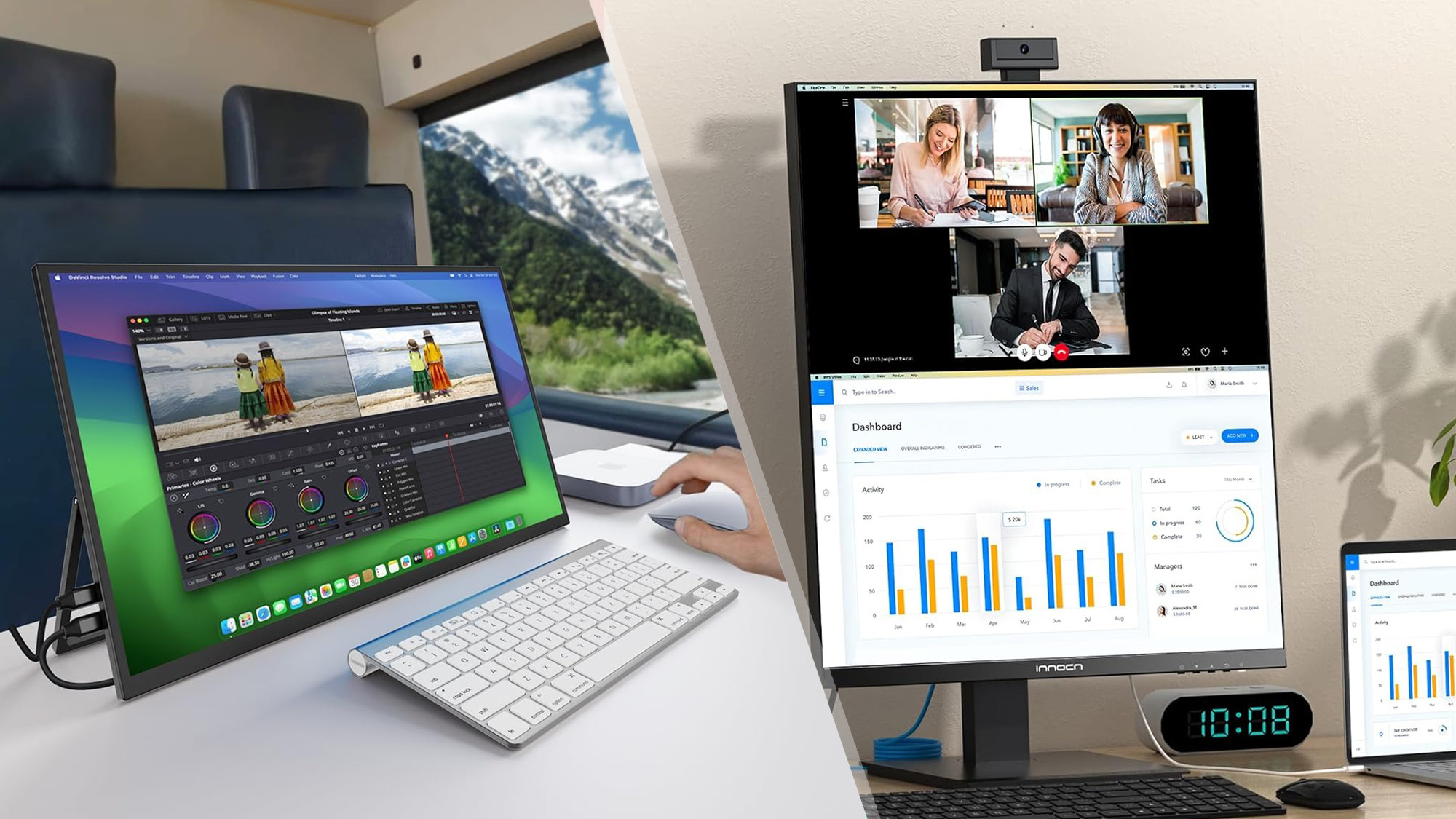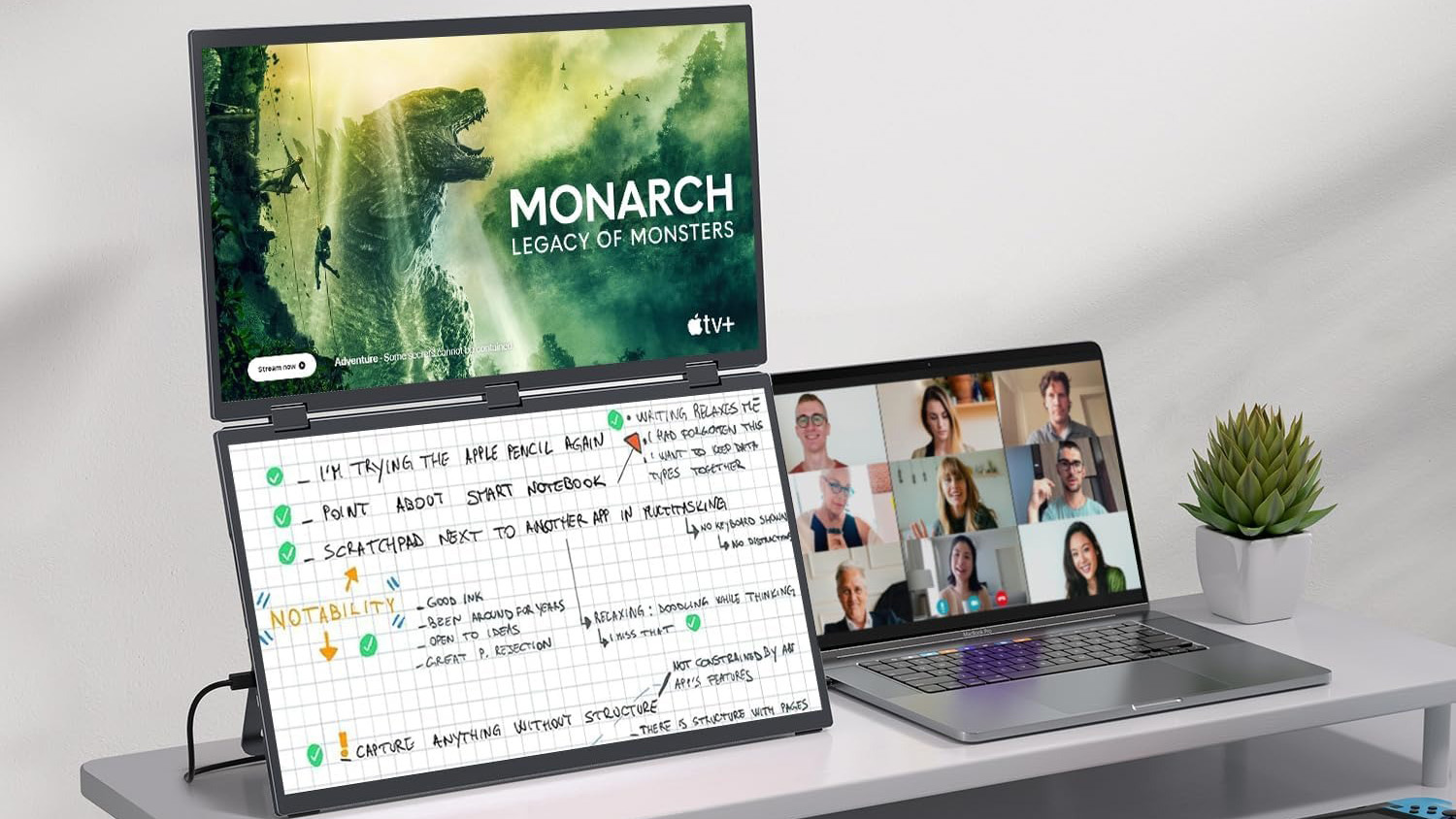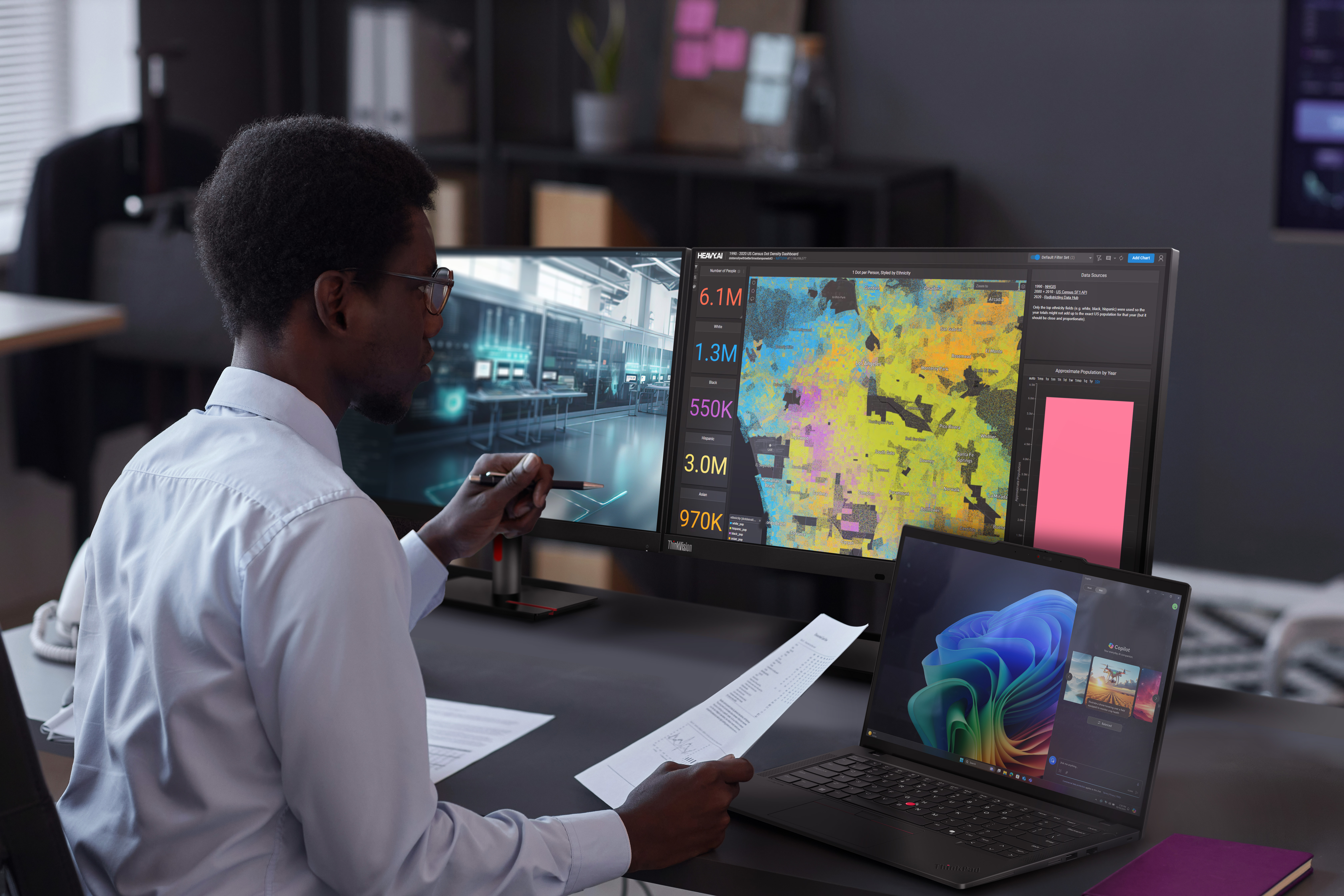I use these unique monitors to boost my productivity at home and on the go
New monitors are helping me stay productive wherever I work

Whether you’ve got a laptop with a display that cramps your style when you need to spread out or a desktop for which you want to reap the productivity benefits of multiple monitors, it seems there’s never any shortage of reasons to want more screen real estate. A few months ago, I wrote about the explosion of portable monitors available in a wide range of sizes, prices, and resolutions. But new options continue to provide pixels aplenty on the desktop, on the go, or both.
Hip to be square
In contrast to ultrawide monitors such as the 49” 32:9 game-optimized displays, the Innocn 28C1Q or LG Dual-Up are 28” displays that boast a 16:18 aspect ratio (like two stacked 16:9 displays), making for one of the most square displays you can purchase. They offer a 2560 x 2880 (SDQHD) wall of screen. The Innocn includes a stand on which it can rotate 90 degrees; my preference was to keep it rotated in its slightly landscape orientation. However, the monitor’s dimensions are such that you don’t feel like you’re giving up much height or width regardless of the orientation, and the rotated position makes accessing connectors a bit easier. By comparison, the LG Dual-Up's Ergo Stand only allows you to tilt the display. However, it is much more readily available than the Innocn.
The screen size is one of the best I’ve used for doing full-page work or spreadsheets, and it’s great for viewing full web pages side by side.
The screen size is one of the best I’ve used for doing full-page work or spreadsheets, and it’s great for viewing full web pages side by side. It soon became a strong rival to my favorite screen, a 34” ultrawide display. The company includes a webcam with a USB-C connector that can plug into the top of the display. One downside, though, is that it can't reorient the screen when you change from portrait to landscape or vice versa. Instead, this must be managed manually through the on-screen display (where the command is oddly buried) or the operating system.

Portable pixels
The Innocn would never be considered portable. That said, other “portable” monitors are pushing the boundaries of how large a display you can take on the go. These were capped at 18.5”, with larger sizes involving a thick backplate. However, ASUS, which has been in the category since the early days before USB-C, now offers the ZenScreen 22 and ZenScreen 24 portable displays. (Its $2,200 ZenScreen Fold OLED display hasn’t seen broad distribution and has been listed as out of stock on ASUS’ website.)
On the plus side, these displays are now large enough to serve as a main desktop monitor
On the plus side, these displays are now large enough to serve as a main desktop monitor for many tasks, and Acer bundles a desk clamp that connects to a mounting device on the monitor’s back. On the other hand, while the 24” display can be powered by a laptop’s USB-C port, doing so will reduce the picture’s brightness; ASUS bundles a power supply with a barrel connector. Also, unlike many smaller portable displays, the ZenScreen 24 has a real on/off switch for added flexibility. Both the 22” and 24” ASUS monitors have 1080p resolution that allows viewing details well enough to take good advantage of the larger size, but a higher resolution would be welcome at this large screen size.

Is the future foldable?
UPerfect, for example, has introduced a 22” display with 2K resolution. And that isn’t its only play for more portable screen real estate. The company, which was early to market with an 18.5” display, has doubled down (and up) on that with its Delta Max. which consists of two hinged 18.5” displays. These displays balance a large amount of screen real estate in a form factor that can fit in many laptop bags. In addition, the top monitor can be partially rotated behind the color one to reduce their profile when the upper display isn’t needed.
These displays balance a large amount of screen real estate in a form factor that can fit in many laptop bags.
The kickstand will support the monitors in portrait mode, but there’s little flexibility in terms of angle. Orientation changes must be made through the operating system. To provide extra stability for the added weight, UPerfect has added a third center hinge beyond the two typically seen in this kind of monitor. For a clean look, the two USB-C connectors are at the top of the back panel of the lower monitor, so the connected cables are hidden from view, but the recessed placement can make controls harder to reach. Also, like the other monitors discussed here, the Duo Max doesn’t support touch, but UPerfect is preparing a version that does.
Get The Snapshot, our free newsletter on the future of computing
Sign up to receive The Snapshot, a free special dispatch from Laptop Mag, in your inbox.

Ross Rubin is the founder and principal analyst at Reticle Research. Ross has been an industry analyst focusing on innovation in the technology, media and telecom markets for over 20 years. Prior to founding Reticle Research, he was executive director and principal analyst at The NPD Group, where he provided analysis on a wide range of technology topics and led research spanning devices, access and content. You can follow him on X and Threads @rossrubin.
